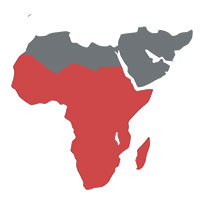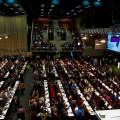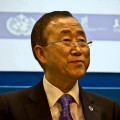Durban Must Deliver: Where to After Kyoto?
Julian K | December 1, 2011.
For Durban to be a success, three main areas must be addressed: a post-Kyoto agreement, financing and forestry.
“Durban is here, this is the last moment,” Martin Khor, Director of the South Centre, said at COP17 in Durban, South Africa.
“We have one thousand gigatonnes of atmospheric space left. If we continue to emit between 45 and 48 gigatonnes a year, there won’t be any space left within the next twenty.”
If climate change is to be limited to two degrees of warming, necessary steps must be taken within six years. The bottom line is, we need to act now. Durban must deliver.
Part One: The Kyoto Protocol, then what?
The Kyoto Protocol’s first commitment period will expire at the end of next year, and no consensus has been reached on what will happen after that.
Through not answering this question, the world is in danger of not having a legally binding agreement on climate after 2012. If no succession plan can be agreed upon, states will be able to emit and not be held to account through a global standard. This includes developed countries that have already set reduction targets under Kyoto. To reach an agreement on a second commitment period or establish a new treaty – which ideally would include non-Kyoto signatories such as the United States – further reduction targets will have to be negotiated amongst current participating parties.
The substantial aspects of the negotiations are yet to occur. Previous negotiations have demonstrated that differing opinions between developing and developed countries on reductions targets are often a matter of contention leading to deadlocks within the process.
For Khor, however, the way forward is simple. “The rich will have to reduce drastically, whereas the poor should be given space to expand.“
Unfortunately, international politics doesn’t work according to principles of justice. The interests of the major players in the negotiations currently do not indicate a strong commitment towards achieving adequate greenhouse gas emission cuts to prevent two degrees of warming.
The US has no intentions to sign a legally binding agreement. Historically, the US has been opposed to being bound legally by international treaties. Practically, the Obama Administration is being held hostage by a Republican House of Representatives with a failed attempt to legislate on climate domestically earlier this year. Even if willing, they would have trouble ratifying a treaty.
“In personal conversations, the US negotiators admit that they can’t get legislation in Congress,” says Lim Li Lin from the Third World Network.
Since it would be akin to a confession of failure if they were to openly admit their domestic powerlessness, the US and other developed economies like Canada choose to ignore their international responsibilities. Instead, the US calls upon major emerging economies (namely Brazil, India and China) to immediately curb their emissions, defeating the principle of ‘common but differentiated responsibilities’.
Developed countries have historically emitted greenhouse gases in order to industrialise to their current economic state. As such, they bear the onus of being the first to act. Developing countries justify their increase of emissions through claiming that it is their turn to industrialise, just as developed countries have been able to previously. According to UNEP’s Green Economy report, it is possible to do so without adversely impacting the environment with financial and technological support from advanced economies.
Apart from these major players, who will most probably determine the outcome of COP17, there are also smaller ‘in-between’ states. These in-between states are often the least developed and, ironically, the most vulnerable to the effects of climate change. Countries such as Bolivia have continued to speak with increasing urgency in Durban, drawing attention to equity issues that were raised in Cancun. Yet, climate policy rarely reflects their concerns.
Negotiations on a successor to Kyoto are stuck. The only gleam of hope may be the European Union. Realising that a comprehensive agreement is not possible in Durban, they have proposed a road map, which would determine the steps to a binding agreement by 2015. Khor, however, thinks this is a scam, saying, “There was already a road map, it was called the Bali Road Map. Why didn’t we stick to that? The developed nations, including the EU, want to hide from the world, that they have failed!”
“Durban is a crucial moment,” as Maite Nkoana-Mashabane, President of COP17, reminded delegates at the opening of the negotiations. Here in South Africa, the international community gets another chance to solve the climate crisis threatening the planet and livelihoods of future generations; it may also be the last chance as the Kyoto Protocol expires. As with past negotiations, Durban will ultimately be remembered not for what was discussed but what is delivered. The imperative to provide a tangible outcome to mitigate climate change must not be underestimated, nor should this opportunity be missed.
Photo and words by Julian Koschorke.













comment